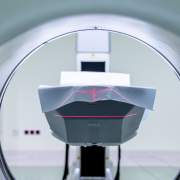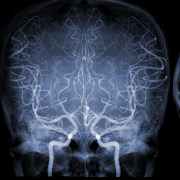Non-Focal Transient Neurological Attacks (TNAs): A Form of Haemodynamic Disturbance?
Author: Dr Jatinder S. Minhas, Department of Cardiovascular Sciences, University of Leicester and University Hospitals of Leicester NHS Trust.
This brief clinical review was prompted following a recent study by Oudeman et al.1 European Stroke Journal 2018.
A 73 year old white male presents to his GP following a period of “confusion and forgetfulness”. He has a background history of hypertension and is an ex-smoker (quit 15 years ago and had a 20 pack year history). His wife is in attendance and states “we were both enjoying the sunshine in the garden when sometime around early afternoon, he started asking bizarre questions”. On further inquiry, he appeared in a ‘dream-like’ state and was disorientated. He kept asking repetitive questions. This episode lasted around 6 hours. His wife recalls him being “back to normal” by early evening.
Epidemiology
Transient neurological attacks (TNAs) with focal symptoms are considered to be transient ischaemic attacks (TIAs) for which the management and prognosis is well understood.2 However, non-focal TNAs with diffuse cerebral symptoms usually regarded as more benign in comparison to their counterpart and therefore management strategies vary.1,2 Non-focal TNA symptoms include blurred vision, unsteadiness, syncope, confusional states, transient global amnesia and paraesthesia.3 The incidence rate per 1000 person-years is 4.7 for focal TNAs, 3.8 for non-focal TNAs and 0.6 for mixed TNA.2 Some data exist to support those with non-focal TNAs, particularly those with mixed TNAs, being at increased risk of stroke, ischaemic heart disease and vascular death as compared to those without TNA.2 However, very few studies have endeavoured to verify the pathophysiology or prognosis of non-focal TNAs in order to confirm or refute their controversially considered benign nature and to better inform patient management.1
Pathophysiology of Non-Focal TNAs
‘Haemodynamic stroke’ describes an ischaemic stroke for which the aetiology is cerebral hypoperfusion as opposed to local or distant embolism.3 However, distinguishing haemodynamic disturbance from thromboembolic aetiology in the spectrum of ischaemic stroke disease can be difficult. Oudeman et al. (2018) studied a population for whom risk of haemodynamic compromise is higher, in this specific clinical context.1 They selected those with carotid artery occlusion (CAO) and those without CAO (who had previously experienced an ipsilateral TIA or non-disabling stroke) and interviewed them for occurrence of eight non-focal symptoms (blurred vision, bilateral leg weakness, unsteadiness, non-rotatory dizziness, paraesthesias, unconsciousness, confusion and amnesia).1 The definition of non-focal TNAs, adapted from the Rotterdam Study4, was defined as ‘attacks of one or more nonfocal signs or symptoms with acute onset, a minimum duration of 30 seconds and a maximum of 24 hours’.1 Overall, those with carotid occlusive disease often have impaired cerebral perfusion and this is thought to depend on systemic blood pressure levels, demonstrating a crucial role for maintenance of cerebral autoregulation. Prior work has demonstrated impaired autoregulation exists in the first 5 days after stroke with recovery over the next 3 months.5
Predicting Likelihood of TNAs
Oudeman et al. (2018) studied 67 patients with CAO and 62 patients without CAO, those with CAO were more likely to experience non-focal TNAs.1 Interestingly, those with ≥1 non-focal TNA were more likely to have contralateral carotid disease or vertebral artery disease than those without CAO.1 These results infer an association with cerebral haemodynamic compromise precipitated by steno-occlusive disease.1
Diagnosing Non-Focal TNAs
The Rotterdam Study, a population based cohort study, demonstrated half of those with TNAs had presenting symptoms considered non-typical for a TIA (for example; disturbances of vision in one or both eyes consisting of flashes, gradual spread of sensory symptoms or coordination difficulties consisting of isolated disorder of swallowing or articulation, tingling of the limbs or lips, etc.).4 The authors highlight differences in risk factors, TNA was more likely in those with increased age, hypertension, smoking and angina pectoris.4 Reassuringly, a reproducibility study on a sub-section of the study population demonstrated highly comparable classifications for TIA and TNA.4
Older Age and TNAs
In a 2013 UK based study of >65 year old adults, lifetime prevalence and incidence of all transient neurological symptoms (based on broad questions about speech, arm or leg weakness and sight issues) was substantially higher than the incidence of TIA from previous population-based studies.6 This demonstrates the challenges associated with identifying those with vascular events from those with non-cerebrovascular pathologies.
Management Guidelines
The Royal College of Physicians (2016) National clinical guideline for stroke states “recurrent attacks of transient neurological symptoms despite optimal medical treatment, in whom an embolic source has been excluded, should be reassessed for an alternative neurological diagnosis”.7 However, there exists a paucity of data to support guidance on management strategies in those with first presentation as non-focal TNAs. Presumably, current practice is to weigh imaging findings (including evidence of intracranial leukoaraiosis, prior ischaemic stroke disease), prior vascular risk factors and crucially aspects of the presenting history to determine a management strategy. However, despite management for some non-vascular diagnoses, like migraine with aura for example, not requiring vascular secondary prevention themselves, data do support a higher stroke risk than the underlying population rate.8
Prognostic Implications of TNAs
Data supports bilateral steno-occlusive disease potentiating haemodynamic compromise and therefore contributing to the prevalence of non-focal TNAs.1 In those with bilateral carotid stenosis of >70%, aggressive blood pressure (BP) lowering has been discouraged.9 This has been supported by haemodynamic data highlighting a high total stroke risk for patients with lower BP with symptomatic extra- or intracranial carotid occlusion.10 Conversely, intensive blood pressure lowering in those with severe cerebral small vessel disease was not associated with hypoperfusion.11 Therefore, revascularisation for those with symptomatic bilateral carotid disease may permit safer BP control and indeed minimise non-focal TNAs, though what should be done for the vast majority with non-focal TNAs without carotid disease? Is the answer to be found in larger mechanistic studies examining for haemodynamic compromise (perfusion and/or autoregulatory disturbance) in those with non-focal TNAs?
Conclusion
Non-focal TNAs are common, in some instances difficult to discern from TIAs, and present a management conundrum that requires consideration of vascular risk factors including carotid disease status. Further research is needed (both mechanistic and epidemiological) to support a more informed management strategy for this patient group.
In this particular case of a non-focal TNA (transient global amnesia), this gentleman would warrant imaging (cerebral and carotid) to exclude an underlying cerebrovascular cause for this presentation, particularly in the context of his vascular risk factors. The management strategy would be dependent on the results of these investigations.
References
(1) Oudeman EA, Volkers EJ, Greving JP, Klijn CJM, Algra A, Kappelle LJ. Non-focal transient neurological attacks in patients with carotid artery occlusion. European Stroke Journal. 2018:2396987318818779.
(2) Bos MJ, van Rijn MJ, Witteman JC, Hofman A, Koudstaal PJ, Breteler MM. Incidence and prognosis of transient neurological attacks. JAMA. 2007;298:2877-2885.
(3) Klijn CJ, Kappelle LJ. Haemodynamic stroke: clinical features, prognosis, and management. Lancet Neurol. 2010;9:1008-1017.
(4) Bots ML, van der Wilk EC, Koudstaal PJ, Hofman A, Grobbee DE. Transient neurological attacks in the general population. Prevalence, risk factors, and clinical relevance. Stroke. 1997;28:768-773.
(5) Aries MJ, Elting JW, De Keyser J, Kremer BP, Vroomen PC. Cerebral autoregulation in stroke: a review of transcranial Doppler studies. Stroke. 2010;41:2697-2704.
(6) Mavaddat N, Savva GM, Lasserson DS, Giles MF, Brayne C, Mant J. Transient neurological symptoms in the older population: report of a prospective cohort study–the Medical Research Council Cognitive Function and Ageing Study (CFAS). BMJ Open . 2013;3:10.1136/bmjopen-2013-003195.
(7) Royal College of Physicians Intercollegiate Stroke Working Party. National clinical guideline for stroke. 2016; Available at: https://www.rcplondon.ac.uk/guidelines-policy/stroke-guidelines. Accessed 11/02, 2019.
(8) Tuna MA, Mehta Z, Rothwell PM. Stroke risk after a first late–onset migraine–like Transient Neurological Attack (TNA): Oxford Vascular Study TNA Cohort. J Neurol Neurosurg Psychiatry. 2013;84:e2-e2.
(9) Rothwell PM, Howard SC, Spence JD, Carotid Endarterectomy Trialists’ Collaboration. Relationship between blood pressure and stroke risk in patients with symptomatic carotid occlusive disease. Stroke. 2003;34:2583-2590.
(10) Yamauchi H, Higashi T, Kagawa S, Kishibe Y, Takahashi M. Impaired perfusion modifies the relationship between blood pressure and stroke risk in major cerebral artery disease. J Neurol Neurosurg Psychiatry. 2013;84:1226-1232.
(11) Croall ID, Tozer DJ, Moynihan B, Khan U, O’Brien JT, Morris RG, et al. Effect of Standard vs Intensive Blood Pressure Control on Cerebral Blood Flow in Small Vessel Disease: The PRESERVE Randomized Clinical Trial. JAMA Neurol. 2018;75:720-727.



